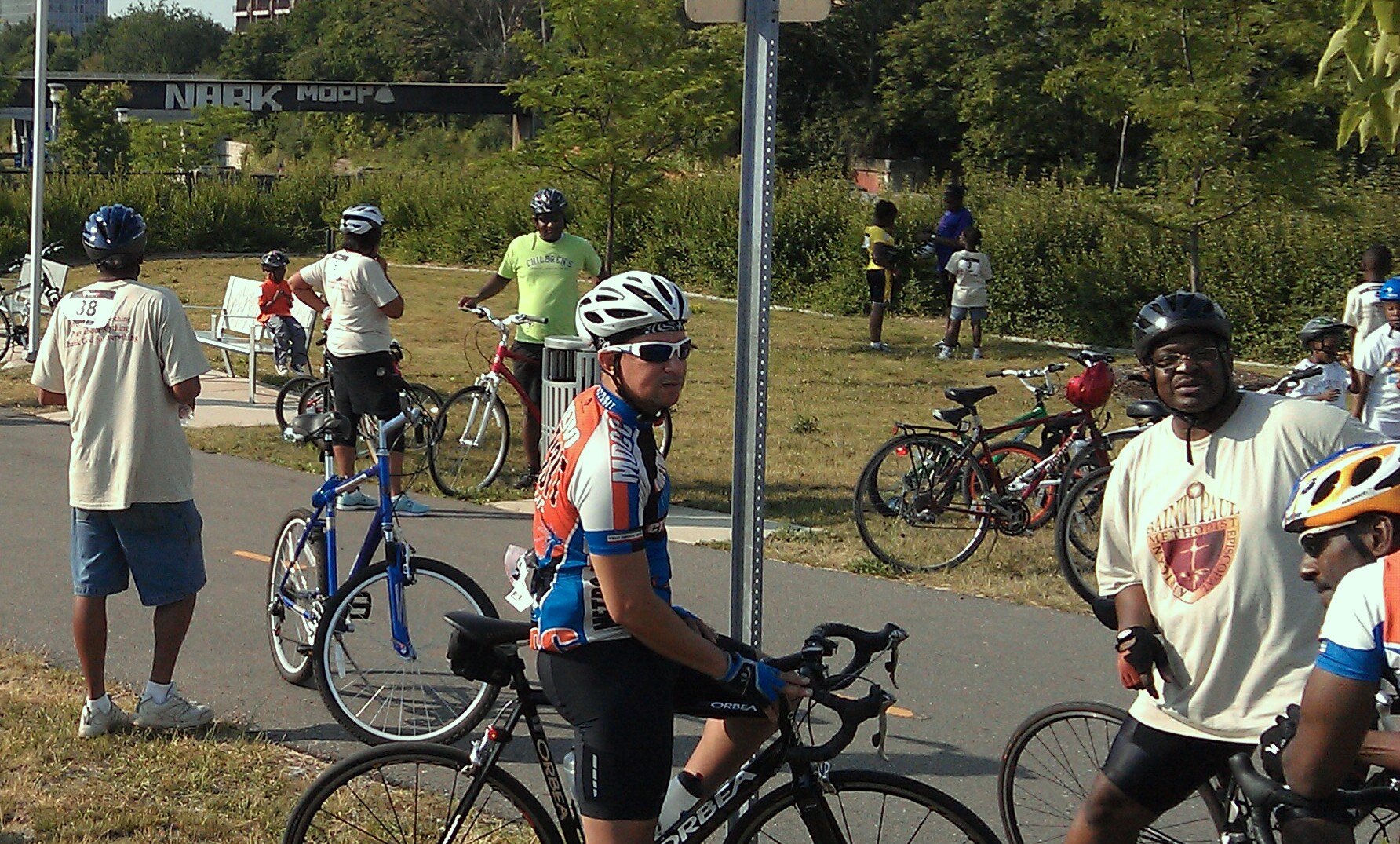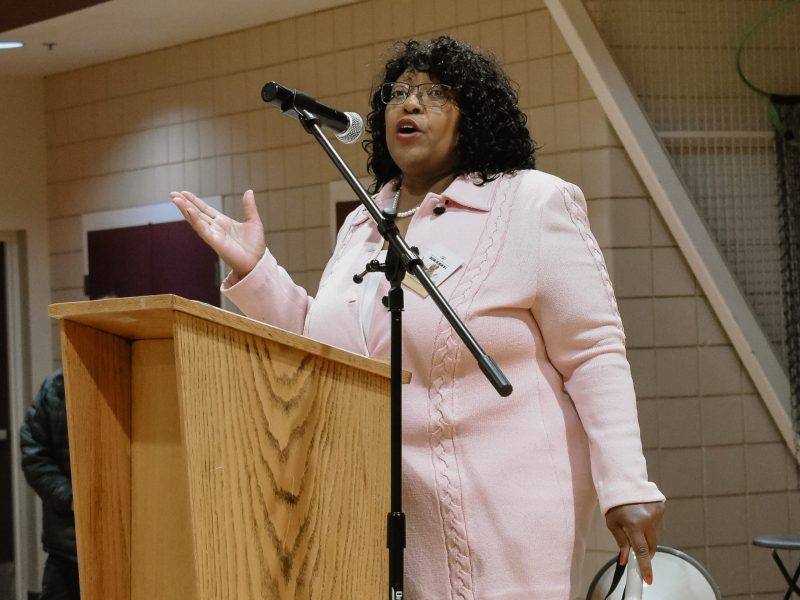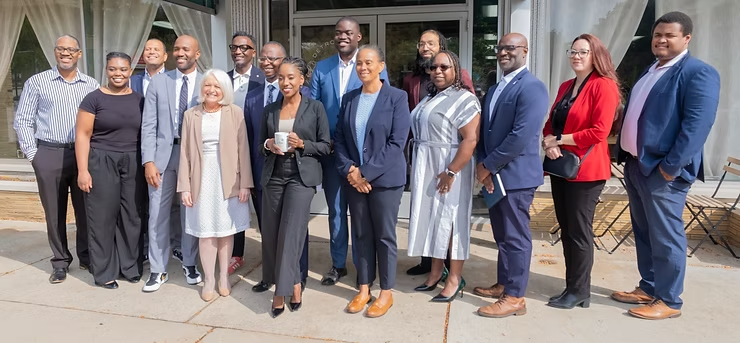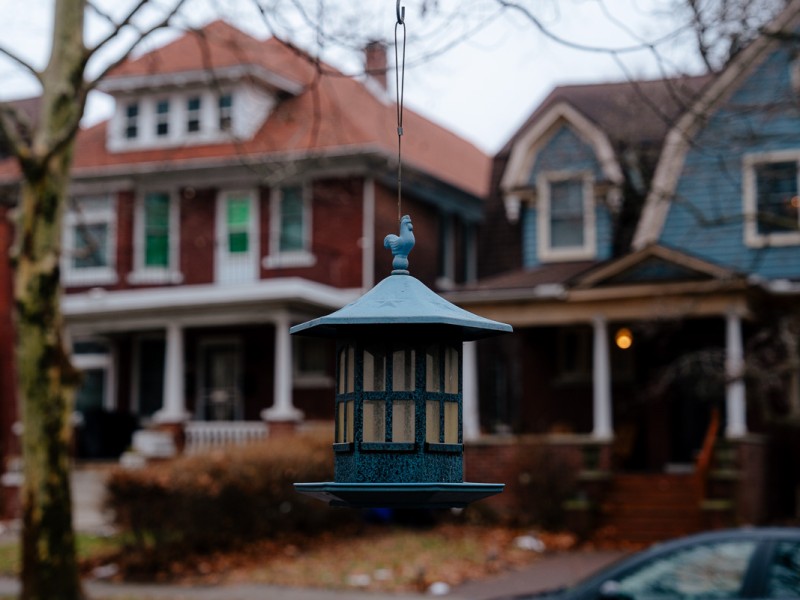
With the flurry of bicycle infrastructure projects taking place in the city these days, we checked in with Todd Scott, executive director of the Detroit Greenways Coalition and a fount of knowledge when it comes to such things. Last week, we gave Todd the keys to our Instagram account as he led us around town as part of Model D’s Explorer Series.
Here, Todd expands on the projects that will make it easier to explore the city and all that it has to offer.
The Livernois streetscape improvements
It was a big project and such a big change to the street and necessitated a lot of community engagement and engagement with local businesses. What they came up with is a design that we've not seen elsewhere in Michigan — it's been done in other cities, but not in Michigan — and that is to have sidewalk-level bike lanes. It's an expensive design because it basically means you're moving curbs. This is a more permanent but expensive option for when you're rebuilding your street.
They had to rebuild Livernois, not because of the bike lanes, but because the sidewalks were too narrow. So when you widen the sidewalks, you might as well widen them a little bit more and add in the bike lanes.
The wide sidewalks were first planned before the pandemic. The existing sidewalks were probably — they were very small. You could not have an outdoor cafe, much less socially distance while walking. Now they have these huge sidewalks that restaurants can have outdoor seating areas, retail can spill out onto the sidewalk. And then you have a safe place for people to ride their bikes and check out the businesses along the way.
One of the other things, too, is that they connected them with the bike lanes in Ferndale on the other side of Eight Mile. So now you can take them from Seven Mile all the way up to downtown Ferndale.
W. McNichols and Kercheval bike lane projects (currently under construction)
So I think what's interesting about that is that project (W. McNichols) was not going to have bike lanes. There were questions about losing parking in order to get the bike lanes and businesses didn't want to lose parking. I think what happened, though, is that the city offered up some of the vacant lots they own along that strip to create parking lots. And that really addressed the issue and that moved things forward for the two way cycle track to go in. At the community meeting, they took a vote and that's what the community wanted.
The Kercheval bike lanes will be very similar to the W. McNichols bike lanes, with two-way lanes on one side of the street.
Bike lanes are not just for bicyclists
You’re always going to find people who are against them. But it seems to be that there's more and more people willing to do it. I think there's also a realization that bike lanes are not just for bicyclists. The benefits of bike lanes are much broader than that. They’re a means for slowing down speeding traffic. And that's just such a big concern with Detroit residents right now, especially in the neighborhoods. There’s such an outpouring of support for speed humps.
But you can't install speed humps on these major roads. So the alternative is to kind of narrow the road down a bit by using bike lanes and wider sidewalks. On Livernois, before the street was changed, the average speed was 40 miles per hour. And there were cars going, you know, 60 or 70 miles per hour. And after the bike lanes went in, the average speed was 30 miles an hour, which is the speed limit. And that's the speed that you ideally want cars to be traveling through your business area so that your pedestrians feel safer. But then drivers can also take notice of the businesses that are along the way. When you're going 40 miles an hour or faster, you're not looking at the businesses on the side of the road.
Floating bus stops
The city is starting to install floating bus stops. And what that means is that you have the bike lane up against the curb, and you build the bus stop between the car travel lane and the bike lane. So it kind of floats in the middle there. Kercheval will have some of those. People are asking what they are because they're not fully done yet, they're not fully marked. It’s hard figuring out what that is but they’re called floating bus stops. There are some on Jos. Campau there.
On Cass Avenue, there aren’t floating bus stops and what happens there is that the bus has to pull into the bike lane and it introduces a conflict area. So by adding the floating bus stop, you're eliminating that conflict area.
Joe Louis Greenway (Phase one construction begins next month)
You know, you have a trail like the Dequindre Cut, which is really cool, but the trail is only two miles. So it's not on people's bucket lists to travel to Detroit to do the Dequindre Cut. When you expand that to become a 27.5-mile trail around the city of Detroit that has so many unique destinations along its route, with so much history, with so many unique communities, suddenly this becomes a bucket list item for people to travel to and then use. I think it also helps, too, that the Joe Louis Greenway route was changed so that it connects directly with the Gordie Howe Bridge and we were successful in getting bike and pedestrian access on the bridge. So you can actually ride your bike from Canada over the bridge and ride the Joe Louis Greenway.
But think about the many destinations along there, too. I mean, you have the amazing food of Southwest Detroit and all the culture there. You have the downtown area, the Dequindre Cut, Eastern Market. It goes right through downtown Hamtramck and all the food and culture that’s there. You go through a historic part of Highland Park where the Model T plant exists. And then you travel farther south through Dearborn before heading back through Delray and back to the bridge. So there's just a lot of stories to tell along this route. And a lot of cool places to stop and grab a bite to eat. I just think it'll attract a lot of folks beyond just the city.
Southwest Greenway and the Riverwalk
That used to be called May Creek and it’s now being called the Southwest Greenway. It is another below ground railroad corridor, much like the Dequindre Cut, although it's not as long. It will run from Ralph C. Wilson, Jr. Centennial Park, which was called the West Riverfront, and connect all the way up to the Ford train station. But the first phase will connect up to Bagley Street. The Riverfront Conservancy is running this project and they expect to award a construction contract this year and get things under construction this year.
I think this is a corridor that a lot of people don't know exists because it's below ground. And you drive over these bridges and you don't realize that you're going over it. So I think people will be really surprised when it comes out. Especially once the park on the Riverwalk is open, too, because it's going to be such an amazing destination.
This year is the Riverwalk’s biggest construction year ever. Last year they finished up a couple of sections of the west Riverwalk in front of the Riverfront Apartments. One of those is open. As soon as they get the third section completed, they'll open it all up. I don't know when that will be completed, but it'll be under construction this year. And then they've also been very busy over at the Uniroyal site, which is the big parcel between Mt. Elliot Park and Gabriel Richard Park. They're working on the seawall now. And then we'll have a connection on to the MacArthur bridge connecting up to Belle Isle.




